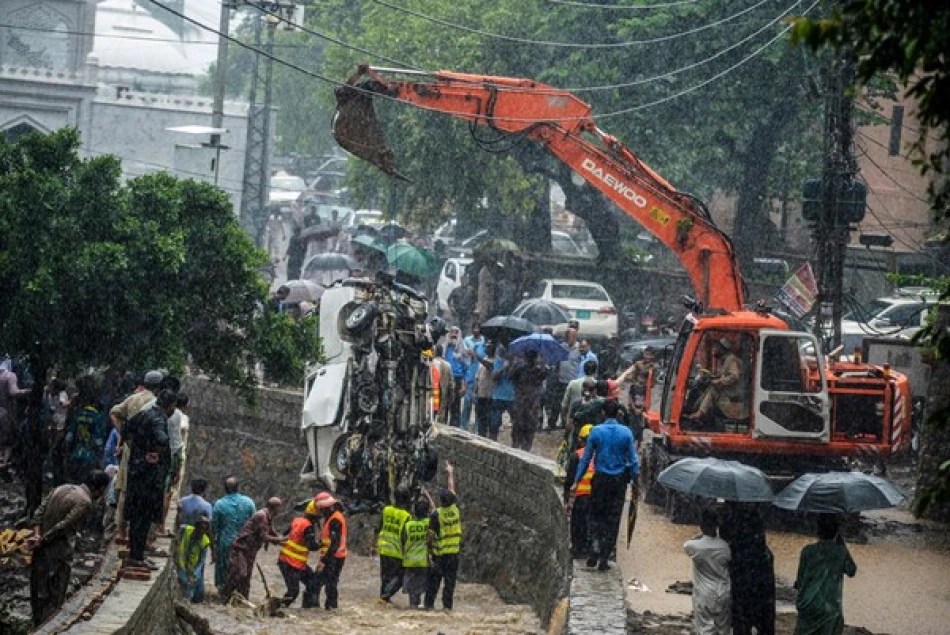
Devastating Floods Ravage Pakistan: Lives Lost, Hundreds Missing in Catastrophic Disaster
Pakistan's Tourism Industry Faces Climate Reality Check as Flash Floods Kill Three, Strand Hundreds
A deadly confluence of extreme weather and vulnerable infrastructure has exposed Pakistan's growing climate crisis, as flash floods in the country's northern tourism region killed at least three people and left 15 missing on Tuesday. The incident, which stranded over 200 domestic tourists after washing away several vehicles, underscores how climate change is reshaping both Pakistan's economy and its appeal as a destination for adventure tourism.
The Immediate Crisis
Heavy monsoon rains triggered flash floods and landslides in the Gilgit-Baltistan region on Monday, forcing authorities to close a major highway near the northern Chilas area. Government spokesperson Faiz Allah Farouk confirmed that tourist vehicles were swept away by the sudden deluge, highlighting the region's vulnerability to extreme weather events.
The northern regions of Pakistan, including Gilgit-Baltistan, have become increasingly popular among domestic tourists seeking cooler temperatures and mountain scenery. However, this latest tragedy demonstrates how the country's infrastructure struggles to cope with intensifying weather patterns.
A Deadly Monsoon Season
Since June 26, Pakistan has experienced above-normal monsoon rainfall that has claimed at least 225 lives nationwide and injured over 500 others, according to rescue officials. This death toll reflects a broader pattern of extreme weather events that experts directly link to climate change.
Climate Change Amplifies Regional Risks
Pakistan ranks among the world's most climate-vulnerable countries, despite contributing less than 1% of global greenhouse gas emissions. The nation faces a cruel paradox: its northern mountainous regions, home to glaciers that feed major river systems, are warming at twice the global average. This creates a dangerous cycle where glacial melt increases flood risks during monsoon seasons.
The current crisis mirrors Pakistan's devastating 2022 floods, which submerged one-third of the country and caused $30 billion in damages. Climate scientists warn that such extreme events are becoming the new normal rather than rare occurrences.
Economic Implications Beyond Tourism
While the immediate focus remains on rescue operations, the broader economic implications are significant. Pakistan's domestic tourism industry, already struggling with political instability and economic challenges, faces additional pressure from climate-related infrastructure damage.
The repeated closure of major highways due to weather events disrupts not only tourism but also trade routes connecting Pakistan to China through the China-Pakistan Economic Corridor (CPEC). This adds another layer of economic vulnerability for a country already grappling with foreign exchange shortages and inflation.
Infrastructure vs. Nature
The tragedy highlights Pakistan's infrastructure deficit in climate adaptation. Unlike countries such as the Netherlands or Japan, which have invested heavily in flood management systems, Pakistan's mountainous regions rely on roads and bridges built decades ago without consideration for extreme weather scenarios.
The government faces a critical choice: invest in climate-resilient infrastructure or continue managing crisis after crisis. Early warning systems, improved drainage, and climate-adapted construction standards could prevent future tragedies, but require significant financial resources that Pakistan currently lacks.
A Regional Wake-Up Call
Pakistan's experience serves as a warning for other South Asian nations facing similar climate pressures. The region's rapid urbanization and infrastructure development often overlook climate resilience, creating vulnerabilities that extreme weather events ruthlessly expose.
As rescue operations continue in Gilgit-Baltistan, the incident reinforces that climate adaptation is no longer optional for countries like Pakistan—it's a matter of economic survival and human safety. The question now is whether policymakers will treat this as another isolated disaster or recognize it as part of a larger climate reality that demands systematic response.
Most Viewed News

 Layla Al Mansoori
Layla Al Mansoori






